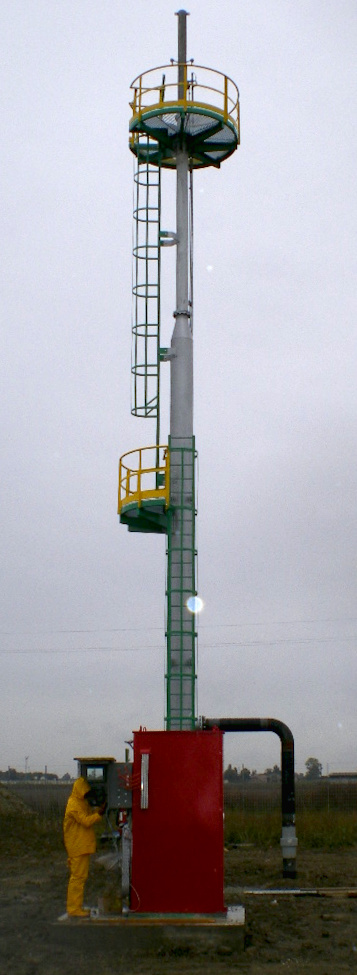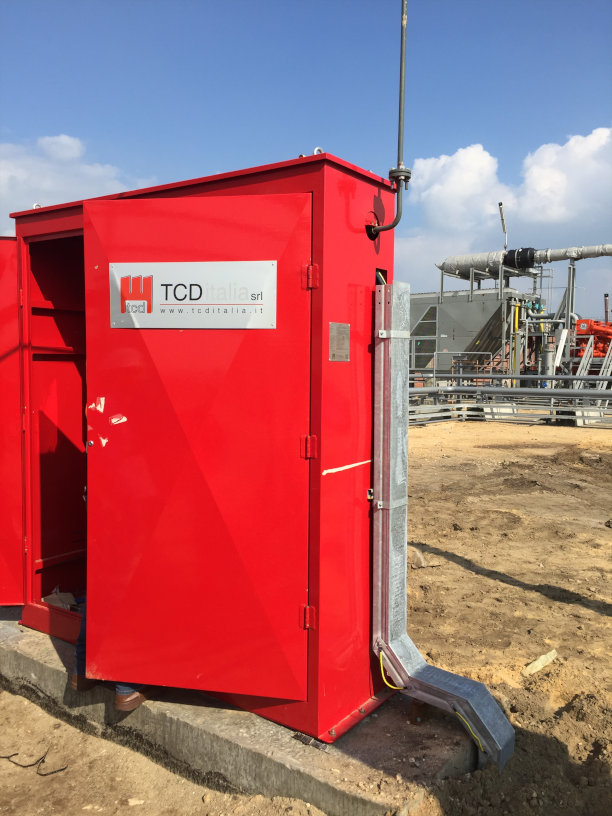Vent Stack And Fire Fighting (Snuffing) System
The TCD Italia Vent Stack is designed to give superior performance to the discharge into atmosphere of hydrocarbon gases.
The basic design takes into consideration the following:
- Ground level concentration of vented gases
- Toxic gases should not create a safety hazard where persons may be present.
- Spontaneous ignition due to lightning strike, mechanical percussion, electrostatic phenomena.
- Noise must be at a safe level where personnel are present.
- Thermal radiation due to spontaneous ignition should not create a safety hazard.
The vent tip can be designed for sub-sonic or sonic exit velocity.
It is a good practice to design the sub-sonic vent tip for an exit velocity of the discharged hydrocarbon greater than 150 m/s.
This will ensure excellent dispersion.
The top part of the vent exit tip is machined in order to minimize any friction effects of the vented gases.
The vent tip is fabricated from thick wall heat resistant alloy and it incorporates a windshield in order to minimize plume draw-down in windy conditions.
The vent can be equipped with a seal suitable to minimize the air ingress and to reduce the rate of the necessary purge flow.
Vent tips can also be provided with a special hood designed to avoid rain ingress into the stack.
The elevated vent system requires a supporting structure. The supporting structure can be guyed, free standing derrick, self-support, derrick-guyed.
TCD Italia is able to offer any type of vent structures in accordance to all common European and American codes and rules

Fire Fighting (Snuffing) System
The rapid snuffing of a vent is often required as a safety measure (usually for accidental ignition of the vent).
It is normal to inject the extinguisher into the gas flow inside the vent stack. As snuffing agent Carbon Dioxide (CO2) is normally utilized.
The extinguishing action of carbon dioxide happens by suffocating the fire, diluting the percentage of oxygen contained in the air and by cooling action provoked by the rapid expansion of gas.
The CO2 is contained in cylinders installed on racks, remotely or manually activated, which discharges the CO2 inside the vent stack via special nozzles.
The quantity of CO2 required to avoid the accidental ignition of the vented gas is normally 3,5 per volume of gas (obviously depend of the venting gas composition).
To minimize the quantity of CO2, it is necessary to inject the inert via special nozzles in order to create a ball of inert gas between the possible flame and the incoming gas.
Presence of flame in a vent system is normally detected via thermocouple located on vent tip.
The thermocouple signals are run back to the snuffing system control panel where temperature switches are used to initiate the CO2 rapid discharge (it is important to consider that the velocity of CO2 at the exit of the bottles is on a range of 1Kg/sec).




